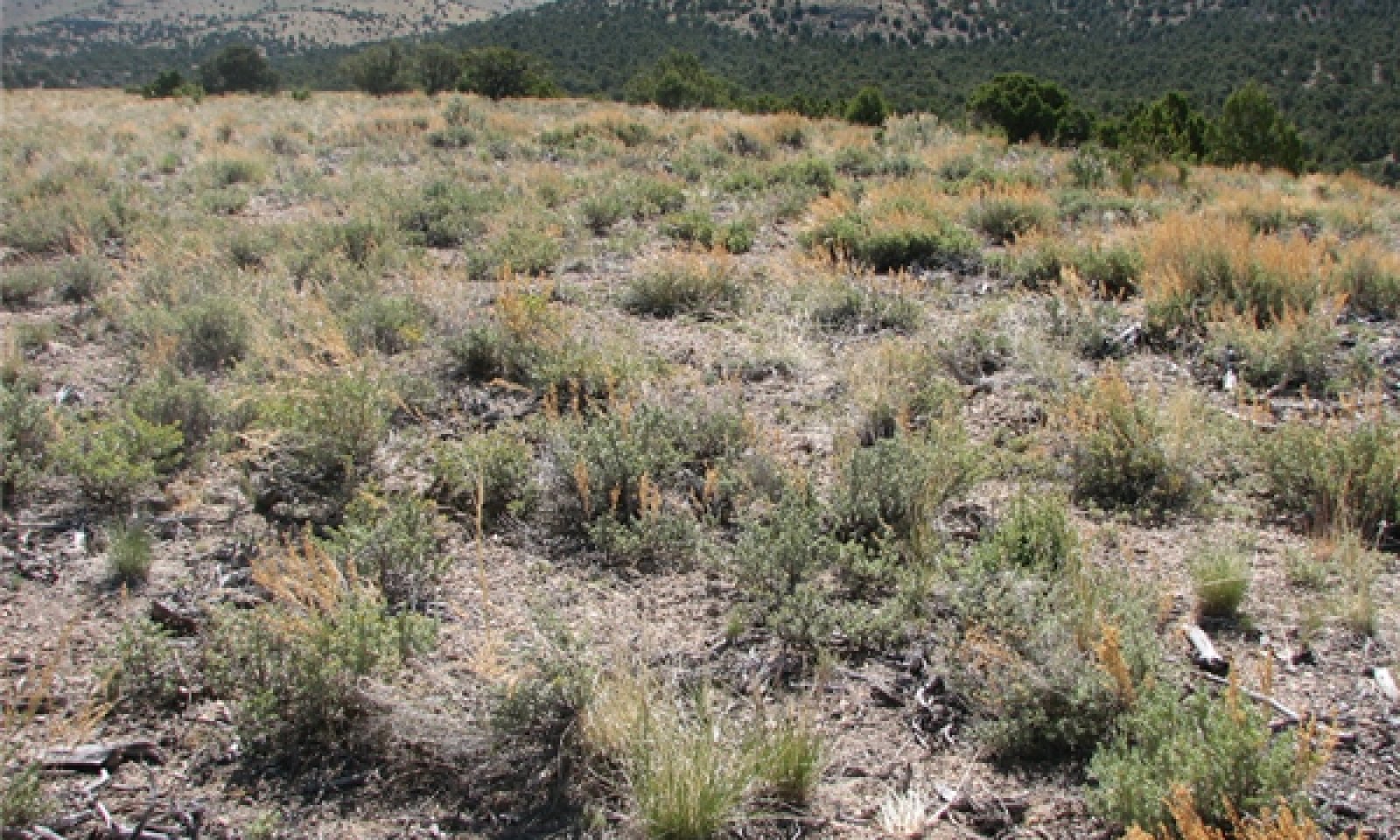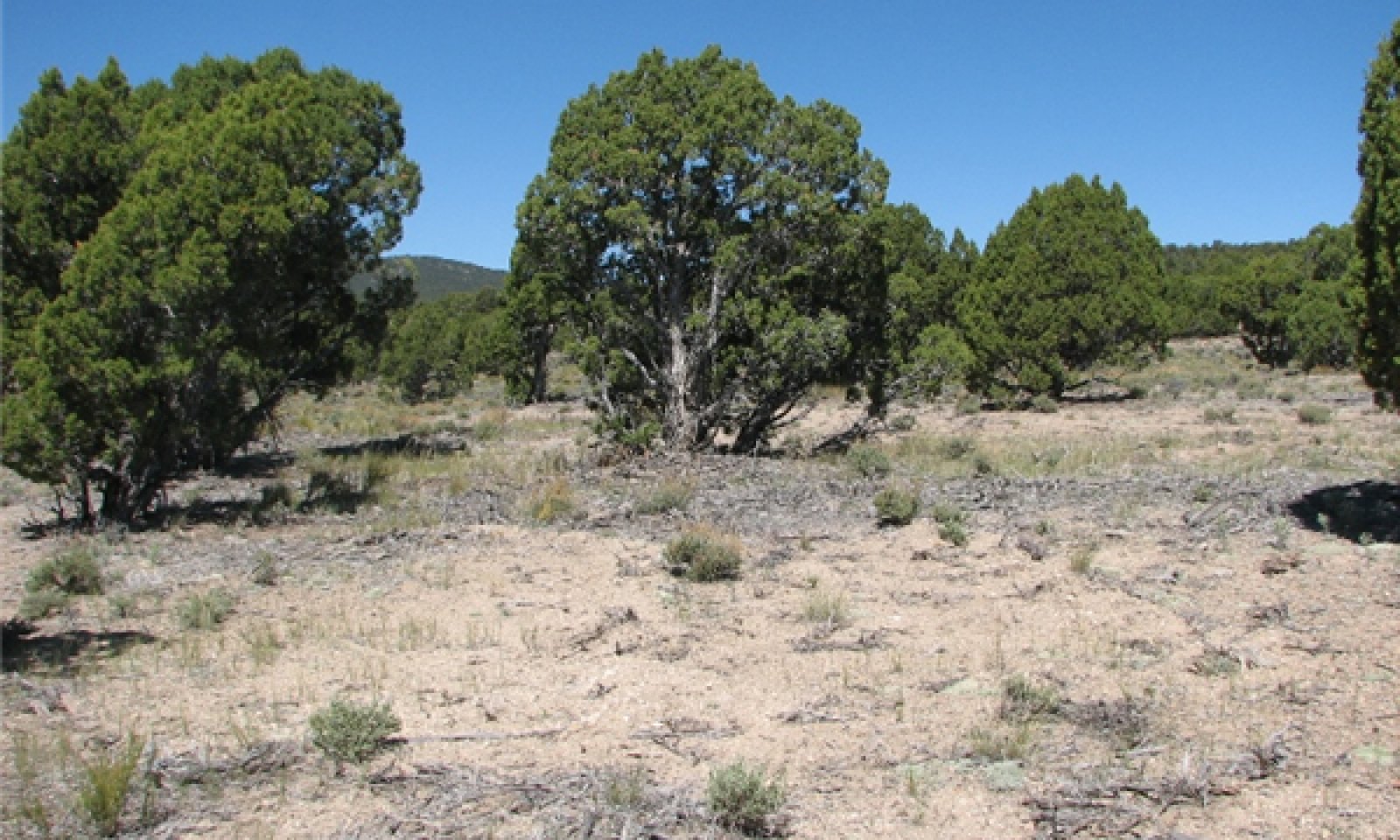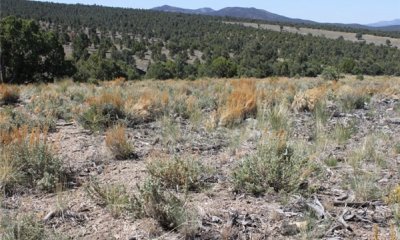
SHALLOW CALCAREOUS LOAM 10-12 P.Z.
Scenario model
Current ecosystem state
Select a state
Management practices/drivers
Select a transition or restoration pathway
- Transition A More details
- Transition A More details
- Transition B More details
- Transition C More details
- Transition A More details
- Transition B More details
- Restoration pathway A More details
- Transition A More details
-
No transition or restoration pathway between the selected states has been described
Target ecosystem state
Select a state
Description
The Reference State 1.0 is a representative of the natural range of variability under pristine conditions. The Reference State has three general community phases; a shrub-grass dominant phase, a perennial grass dominant phase and a shrub dominant phase. State dynamics are maintained by interactions between climatic patterns and disturbance regimes. Negative feedbacks enhance ecosystem resilience and contribute to the stability of the state. These include the presence of all structural and functional groups, low fine fuel loads, and retention of organic matter and nutrients. Plant community phase changes are primarily driven by fire, periodic drought and/or insect or disease attack.
Submodel
Description
This state is similar to the Reference State 1.0 with three similar community phases. Ecological function has not changed, however the resiliency of the state has been reduced by the presence of invasive weeds. Non-natives may increase in abundance but will not become dominant within this State. These non-natives can be highly flammable and can promote fire where historically fire had been infrequent. Negative feedbacks enhance ecosystem resilience and contribute to the stability of the state. These feedbacks include the presence of all structural and functional groups, low fine fuel loads, and retention of organic matter and nutrients. Positive feedbacks decrease ecosystem resilience and stability of the state. These include the non-natives’ high seed output, persistent seed bank, rapid growth rate, ability to cross pollinate, and adaptations for seed dispersal.
Submodel
Description
This state has two community phases, one that is characterized by a decadent black sagebrush overstory and the other with a shadscale or rabbitbrush overstory with a Sandberg bluegrass understory. The site has crossed a biotic threshold and site processes are being controlled by shrubs. Bare ground has increased and pedestalling of grasses may be excessive.
Submodel
State 4
Tree State





Description
This state has two community phases that are characterized by a dominance of Utah juniper and/or singleleaf pinyon in the overstory. Black sagebrush and perennial bunchgrasses may still be present, but they are no longer controlling site resources. Soil moisture, soil nutrients and soil organic matter distribution and cycling have been spatially and temporally altered.
Submodel
Description
This state has one community phase dominated by an annual grass community. In this state, a biotic threshold has been crossed and state dynamics are driven by the dominance and persistence of the annual grass community which is perpetuated by a shortened fire return interval fire. The herbaceous understory is dominated by annual non-native species such as cheatgrass and mustards. Resiliency has declined and further degradation from fire facilitates a cheatgrass and sprouting shrub plant community. The fire return interval has shortened due to the dominance of cheatgrass in the understory and is a driver in site dynamics.
Submodel
Mechanism
Trigger: This transition is caused by the introduction of non-native annual plants, such as cheatgrass and mustards.
Slow variables: Over time the annual non-native species will increase within the community.
Threshold: Any amount of introduced non-native species causes an immediate decrease in the resilience of the site. Annual non-native species cannot be easily removed from the system and have the potential to significantly alter disturbance regimes from their historic range of variation.
Mechanism
Trigger: To Community Phase 3.1: Inappropriate cattle/horse grazing will decrease or eliminate deep rooted perennial bunchgrasses, increase Sandberg bluegrass and favor shrub growth and establishment. To Community Phase 3.2: Severe fire will remove sagebrush overstory, decrease perennial bunchgrasses and enhance Sandberg bluegrass. Soil disturbing brush treatments and/or inappropriate sheep grazing will reduce sagebrush and potentially increase sprouting shrubs and Sandberg bluegrass.
Slow variables: Long term decrease in deep-rooted perennial grass density and/or black sagebrush.
Threshold: Loss of deep-rooted perennial bunchgrasses changes nutrient cycling, nutrient redistribution, and reduces soil organic matter. Loss of long-lived, black sagebrush changes the temporal and depending on the replacement shrub, the spatial distribution of nutrient cycling.
Mechanism
Trigger: Time and lack of disturbance or management action allows for Utah Juniper and/or singleleaf pinyon to dominate. This may be coupled with grazing management that favors tree establishment by reducing understory herbaceous competition for site resources
Feedbacks and ecological processes: Trees increasingly dominate use of soil water resulting in decreasing herbaceous and shrub production and decreasing organic matter inputs, contributing to reductions in soil water availability to grasses and shrubs and increased soil erodibility.
Slow variables: Over time the abundance and size of trees will increase.
Threshold: Trees dominate ecological processes and number of shrub skeletons exceed number of live shrubs.
Mechanism
Trigger: Catastrophic fire or soil surface disturbance.
Slow variables: Increased production and cover of non-native annual species.
Threshold: Loss of deep-rooted perennial bunchgrasses and shrubs changes energy and nutrient capture and cycling both spatially and temporally within the community. Increased, continuous fine fuels modify the fire regime by changing intensity, size and spatial variability of fires.
Mechanism
Trigger: Absence of disturbance over time allows for Utah juniper or singleleaf pinyon dominance. This may be coupled with grazing management that favors tree establishment by reducing understory herbaceous competition for site resources.
Slow variables: Long-term increase in juniper and/or singleleaf pinyon density and size.
Threshold: Trees overtop black sagebrush and out-compete shrubs for water and sunlight. Shrub skeletons exceed live shrubs in number. There is minimal recruitment of new shrub cohorts. Litter builds up underneath trees while bare ground increases in interspaces; this changes nutrient cycling and levels of organic matter in the soil.
Mechanism
Trigger: Severe fire.
Slow variables: Increased production and cover of non-native annual species.
Threshold: Increased, continuous fine fuels modify the fire regime by changing intensity, size and spatial variability of fires. Changes in plant community composition and spatial variability of vegetation due to the loss of perennial bunchgrasses and sagebrush truncate energy capture spatially and temporally thus impacting nutrient cycling and distribution.
Mechanism
Tree removal with minimum soil disturbance such as hand felling or mastication within community phase 4.1. This is usually combined with seeding of desired species.
Relevant conservation practices
| Practice | External resources |
|---|---|
|
Brush Management |
|
|
Range Planting |
Mechanism
Trigger: Catastrophic fire causing a stand replacement event will transition Annual State 5.0. Inappropriate tree removal practices with soil disturbance will also cause a transition to Annual State 5.
Slow variables: Increased production and cover of non-native annual species under tree canopies.
Threshold: Closed tree canopy with non-native annual species dominant in the understory changes the intensity, size and spatial variability of fires. Changes in plant community composition and spatial variability of vegetation due to the loss of perennial bunchgrasses and sagebrush truncate energy capture and impact nutrient cycling and distribution.
Model keys
Briefcase
Add ecological sites and Major Land Resource Areas to your briefcase by clicking on the briefcase (![]() ) icon wherever it occurs. Drag and drop items to reorder. Cookies are used to store briefcase items between browsing sessions. Because of this, the number of items that can be added to your briefcase is limited, and briefcase items added on one device and browser cannot be accessed from another device or browser. Users who do not wish to place cookies on their devices should not use the briefcase tool. Briefcase cookies serve no other purpose than described here and are deleted whenever browsing history is cleared.
) icon wherever it occurs. Drag and drop items to reorder. Cookies are used to store briefcase items between browsing sessions. Because of this, the number of items that can be added to your briefcase is limited, and briefcase items added on one device and browser cannot be accessed from another device or browser. Users who do not wish to place cookies on their devices should not use the briefcase tool. Briefcase cookies serve no other purpose than described here and are deleted whenever browsing history is cleared.
Ecological sites
Major Land Resource Areas
The Ecosystem Dynamics Interpretive Tool is an information system framework developed by the USDA-ARS Jornada Experimental Range, USDA Natural Resources Conservation Service, and New Mexico State University.



